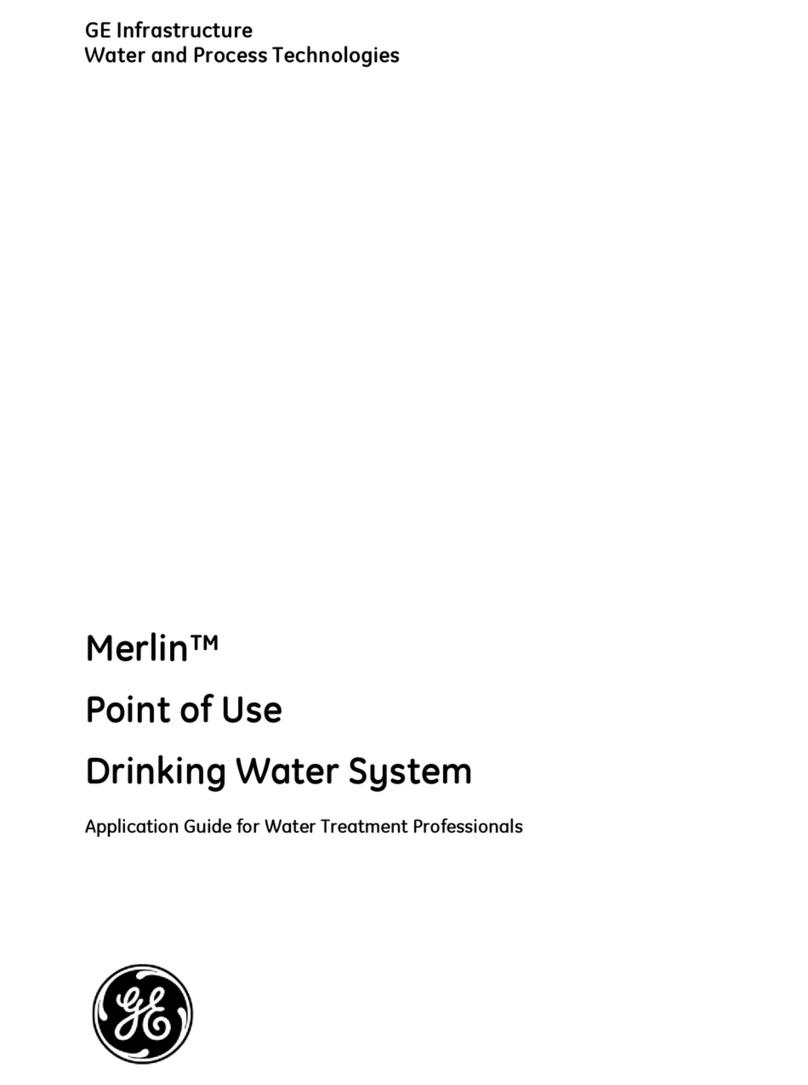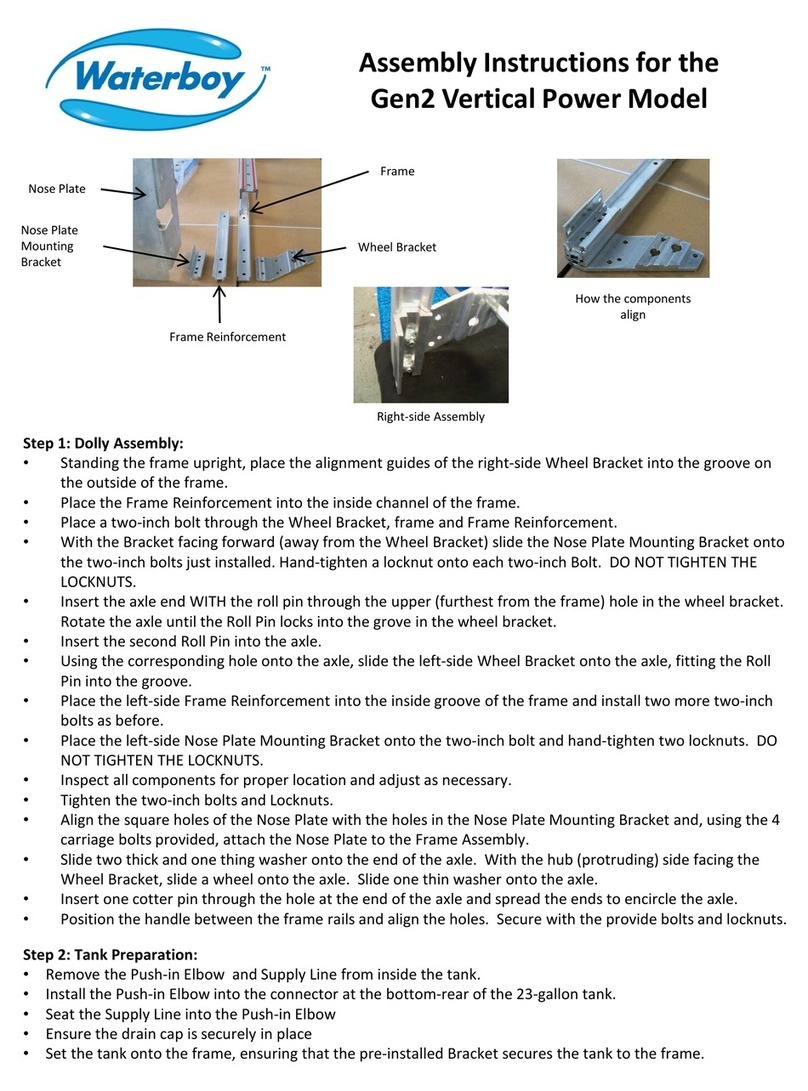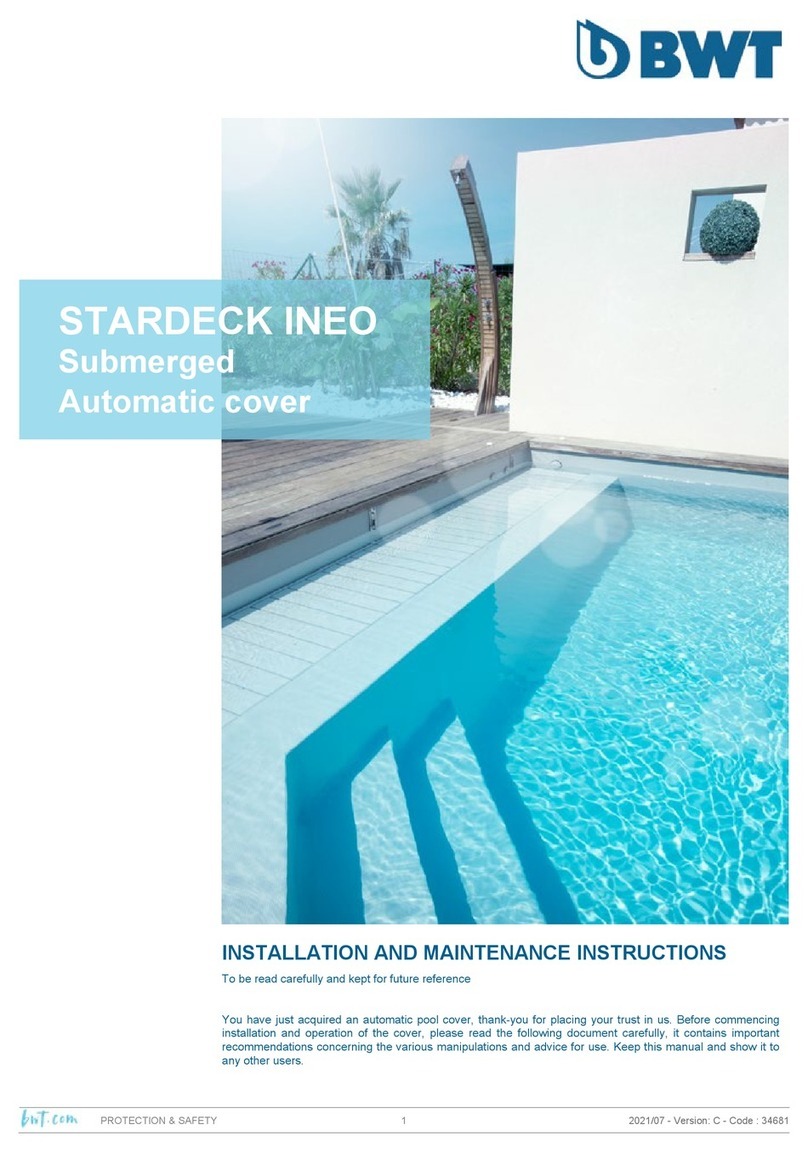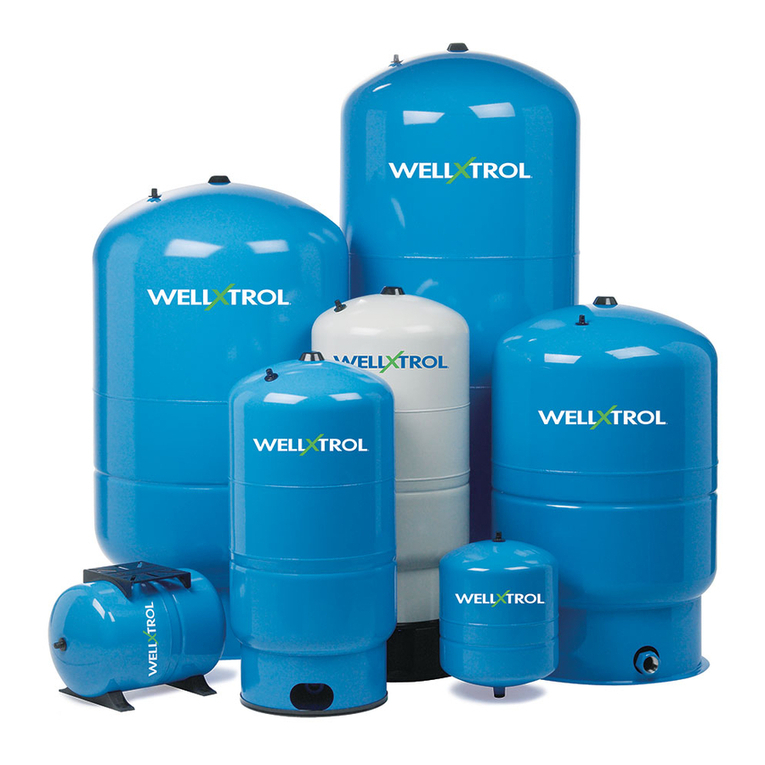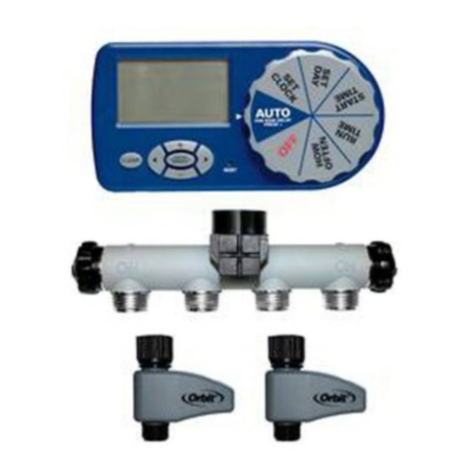EnerWorks EWRA2 User manual

Rev. 2013,04,23
Module 4
Solar Collector
Installation Manual
1, 2, 3 & 4 Collector Pre-Heat Appliances
(EWRA1, EWRA2)
1 & 2 Collector Single Tank Appliances (USA only)
( )EWRA1-ST, EWRA2-ST
Solar Water Heating Appliances
EnerWorks Inc.
969 Juliana Drive
Woodstock, ON
N4V 1C1, Canada
Tel: (519) 268-6500
Toll-free: 1-877-268-6502
Fax: (519) 268-6292
www.enerworks.com
© 2013 enerworks

Solar Collector
Installation Manual
EnerWorks encourages installers of EnerWorks products to always keep workmanship, best practices
and safety in mind. An organized installation will benefit both installer and end-user.
The EnerWorks Solar Collector is one of the highest-rated in North America. This assessment was
carried out by third-party testing under the supervision and scrutiny of the Solar Rating & Certification
Corporation™ (SRCC™). The EnerWorks Heat Safe Solar Collector has SRCC™ OG-100 certification
(Certification #: 100-2005-014A) and the EnerWorks Residential Solar Water Heating Appliances are
certified to OG-300 standards. This certification does not imply endorsement or warranty of these
products by the SRCC™.
The Pre-Heat and Single Tank Appliances described in this manual, when properly installed and
maintained, meet or exceed the standards established by the Florida Solar Energy Center (FSEC), in
accordance with Section 377.705, Florida Statutes. This certification does not imply endorsement or
warranty of this product by the Florida Solar Energy Center or the State of Florida.
The EnerWorks Pre-Heat Appliance is the first system in North America to achieve the Canadian
Standards Association (CSA) certification (CSA F379.1). This certification does not imply endorsement
or warranty by CSA.
Foreword
Recognize this symbol as an indication of important safety information!
EnerWorks Residential Solar Water Heating Appliances must be installed as
directed by this manual by an EnerWorks-authorized dealer or warranty is void.
CALIFORNIA PROPOSITION 65 WARNING: This product contains
chemicals known to the State of California to cause cancer,
birth defects or other reproductive harm.
Appliance must only be installed by an EnerWorks-authorized
dealer or warranty is void.

Solar Collector
Installation Manual
CARE, HANDLING & STORAGE
EnerWorks Solar Collectors are manufactured with tempered glass. Though extremely resistant to
impact, tempered glass can break if an edge is subjected to stress. During storage and installation,
protect glass edges. Glass breakage is not covered by warranty.
Store collectors in a dry place, lying flat with glass up, or leaning on long edge with glass facing out and
connections at top. Protect collector from scratches and damage by placing it on a soft surface such as a
blanket or cardboard. When hoisting collectors to roof, be very careful not to bang glass edge.
Collectors must not be levered over ladder or eave as they may be damaged. Be very careful of collector
connections as they are soft copper and may be easily damaged. A leak-proof heat-transfer fluid loop
can only be achieved if collector connections are not damaged.
Do not store collectors outside with glass face down. Due to EnerWorks’ patented stagnation-control
device, back of collector is not sealed to atmosphere. Rain may enter collector if it is stored face down.
Any damage due to ingress of water is not covered by warranty.
It is best to store both the EnerWorks Solar Collectors and the EnerWorks Energy Station in a cool, dry
place.
1
Module 4

Contents
1 – Safety
2 – EnerWorks Solar Water Heating Appliance
3 – Site Evaluation
4 – Line-Set Installation
5 – C-Channel Installation
6 – Solar Collector Installation
7 – Collector Flashing and Leaf-Guard Installation
2.1 Description
2.2 Pre-heat Appliance Schematic
2.3 Single Tank Appliance Schematic (USA only)
3.1 Collector Location, Orientation and Shading
tanding Seam M
3.2 Available Roof Space
3.3 Collector Racks
3.4 Line-Set
3.5 Location of Energy Station and Solar Storage Tank
4.1 Line-Set Description
4.2 Line-Set Routing
4.3 Line-Set Installation
5.1 Locating Rafters and Positioning C-Channel
5.2 Securing C-channel Asphalt roof (Shingles)
5.3 Securing C-channel to S etal Roof
5.4 Roof-Penetration Flashing Boot
6.1 Preparation of Collector(s)
6.2 Hoisting and Securing Collectors to Roof
6.3 Securing Collectors to C-Channel
6.4 Collector Configurations
6.5 Line-Set and Control-Wire Connections
6.1.1 Converting Collector(s) from Left to Right
6.1.2 Installing Temperature Sensor (Thermistor)
6.1.3 Installing Collector Mounting Brackets
6.2.1 Ladder Hoist or Shingle-Lift
6.2.2 Scissor Lift or Articulating or Forklift Boom
6.2.3 Scaffolding
6.2.4 Ladder and Lift Line
6.4.1 One-Collector Configuration
6.4.2 Two-Collector Configuration
6.4.3 Three-Collector Configuration
6.4.4 Four-Collector Configuration
7.1 Side-Flashing for 1-Collector Appliances
7.2 Center-Flashing for 2, 3 and 4-Collector Appliances
7.3 Leaf-Guard Installation
Product and Installation Registration Form
Residential Site Survey
Tool & Supply Checklist
.................................................................................................................................... 3
............................................................................... 4
.......................................................................................................................7
........................................................... 8
............................................................................................................... 8
......................................................................................................... 11
..................................................................................................... 16
..................................................................... 31
..................................................................................................................4
........................................................................5
...............................................................6
................................................................... 7
.................................................................................................... 8
............................................................................................................ 8
...................................................................................................................... 8
..................................................................................................... 8
........................................................................................................... 9
....................................................................................................10
................................................................. 11
................................................................. 13
........................................................ 15
................................................................................... 15
.......................................................................................... 16
...................................................................................... 23
.................................................................................... 26
................................................................................... 27
................................................................... 17
............................................................... 20
...................................................................... 21
...................................................................... 22
................................................................... 23
............................................................................................................. 23
.................................................................................................. 24
................................................................................ 25
................................................................................... 26
................................................................................... 27
.................................................................................... 28
......................................................................... 29
......................................................................... 30
...................................................... 31
................................................................................................ 33
..................................................................................... 34
................................................................................................................. 35
.................................................................................................................. 36
2Module 4
Solar Collector
Installation Manual

1 – Safety
EnerWorks assumes no responsibility for damage, loss or injury related to installation of this
appliance.
Observe any and all regulations relating to installation of solar appliances and to plumbing to
potable water supply. Plumbing and/or building permits may be necessary. EnerWorks Solar
Water Heating Appliances utilize a single-wall as well as double-wall heat exchangers.
Selection must be acceptable in the jurisdictions.
Assemblies, installation and materials used during installation shall meet applicable
requirements of local, regional, state, provincial, and federal regulations and fire codes,
national roofing contractors association practices. Any penetrations made in drywall or any
other firewall must be fixed to maintain integrity of fire protection.
All persons working on roofs should have successfully completed a fall-safety course and
should be properly equipped with appropriate safety equipment.
3
Module 4
Solar Collector
Installation Manual

2 – EnerWorks Solar Water Heating Appliance
The EnerWorks Solar Water Heating Appliance has four main parts – the solar collectors, the line-set,
the Energy Station and the solar storage tank.
The Energy Station uses a pump to circulate a heat-transfer fluid through the “collector loop”. This
collector loop includes the solar collectors, the fluid lines or “line-set” and a heat exchanger. The
collector loop is a “closed loop”, meaning there is no contact of the heat transfer fluid with your potable
water or with the atmosphere. The collector loop contains only a small volume of heat-transfer fluid
which is freeze-protected. Though freeze protection may not be necessary in all areas, the heat-transfer
fluid also has an elevated boiling point and so is suitable throughout North America.
When exposed to sunlight, the solar collectors get hot. Passive overheat-protection prevents
temperature exceeding 275°F (135°C); pressure and flow conditions depends on the system. As the
heat-transfer fluid passes through the collectors, it absorbs heat and then travels down the line-set to
the Energy Station. The hot fluid passes through the heat exchanger and heat is transferred to the
potable water. After giving up its heat to the potable water, the cool heat-transfer fluid is pumped back
to the solar collectors to be heated again. Hot potable water is stored in the solar storage tank.
In the Pre-Heat Solar Water Heating Appliance (Fig. 2.2), the solar storage tank is a standard, North
American, electric hot-water tank. No power is connected to this tank – it only stores solar-heated water.
The solar storage tank is plumbed in series with the original water-heater (electric, fossil fuel, or on-
demand). Whenever hot water is used in the home, solar heated water leaves the solar storage tank
and enters the original water-heater. The original water-heater now requires much less energy for water
heating.
Thus, the Appliance displaces energy, but it does not replace the original water-heater. The original
heater guarantees hot water even under poor solar conditions (at night or when very cloudy). It also
ensures that hot water is stored or supplied at an appropriate temperature to kill harmful bacteria. The
acceptable temperature set-point is specified in local plumbing codes. Do not turn off or bypass the
back-up water-heater. Even in summer months, additional heat from the back-up heater may be
required.
The Single Tank Solar Water Heating Appliance (Fig. 2.3) incorporates solar water-heating and
auxiliary water-heating in a single tank. The Single Tank Appliance is the solar solution for homes (in the
United States) that cannot accommodate two tanks. For more information on Appliance components
and function, please see the Owner Manual.
2.1 Description
Solar Collector
Installation Manual
4Module 4

5
Module 4
2.2 Pre-Heat Appliance Schematic
Fig. 2.2 EnerWorks Pre-Heat Solar Water Heating Appliance (with optional leaf-guard)
Solar Collector
Installation Manual
10
12
11
9
1
2
3 4 5
6
8
7
13
15
9 14
14
16
18
17
Solar collectors (1 to 4)
Line-set roof-penetration (behind flashing)
Heat transfer fluid line from collectors to
Energy Station (red – carries hot fluid)
Heat transfer fluid line from Energy Station to
collectors (blue – carries cool fluid)
Cold mains water supply (blue)
Hot water supply to home (red)
Thermosiphon loop,
solar-heated water to storage tank (red)
Thermometer
Bypass valves
(to isolate Appliance for service)
Anti-scald valve
(not included, may be required by code)
1
2
3
4
5
6
7
8
12
15
16
17
18
13
9
10
11
14 Heat trap (U-bend limits heat loss)
Solar storage tank
Energy Station
Pre-existing or auxiliary hot water tank or
on-demand heater
Pressure relief valve (inside cover)
Thermosiphon loop feed (from storage)

2.3 Single Tank Appliance Schematic (USA only)
Fig. 2.3 EnerWorks Single Tank Solar Water Heating Appliance (with optional leaf-guard)
Solar Collector
Installation Manual
6
1
2
3 4
7
5
9
14
13
12
10
11
8
Solar collectors (1 or 2)
Line-set roof-penetration (behind flashing)
Heat transfer fluid line from collectors to
Energy Station (red – carries hot fluid)
Heat transfer fluid line from Energy Station
to collectors (blue – carries cool fluid)
Hot water supply to home (red)
Anti-scald valve (required)
Cold mains water supply (blue)
Solar storage tank with electric back-up
Thermometer
Thermosiphon loop,
solar-heated water to storage tank (red)
1
2
3
4
5
6
7
8
12
13
9
10
11
14
Energy Station
Pressure relief valve (inside cover)
Thermosiphon loop feed (from storage)
Heat trap (U-bend limits heat loss)
6Module 4

3 - Site Evaluation
To achieve good performance and a good return on investment, the Appliance must be sized correctly
and it must be oriented properly. Site evaluation is necessary to determine whether a site is appropriate
and to evaluate the complexity of the installation. It is also necessary to determine the hot water loads,
number of individuals in a home, number of collectors and size of solar storage tank.
A site survey (see Appendix – Residential Site Survey) has been developed to assist installers in
evaluating potential installation locations. This can be removed from the Appendices and copied as
needed. Solar simulation software may assist in determining the best location and orientation for the
solar collectors.
For roof-mounting, installer should ensure that roof cladding or sheathing is in good repair. Also
ensure that rafters and trusses are adequate to support weight of solar collector(s) and mounting
assembly.
Building and plumbing permits and/or inspections may be necessary to proceed with installation.
Follow all code requirements and regulations.
Collector(s) should face as close to south as possible for
optimal performance. Within 45° of south is acceptable
as there is less than 10% loss (Fig. 3.1.1).
The roof angle from horizontal for optimal year-round
performance is equivalent to latitude of location plus or
minus 15°. A steeper angle provides better winter
performance as the sun is lower in the sky. Collectors will
also shed snow more effectively. A shallow angle
maximizes energy capture in summer when sun is high.
Be cautious of placement on low angle roofs due to
snow shedding and potential for ice-damming. A
minimum collector angle of 14° (3:12 pitch) is necessary
for stagnation-control device to function.
Shading of collectors greatly reduces performance.
When selecting installation location, consider potential
shading by trees and other buildings, especially
between peak solar hours of 10:00 and 15:00. A Solar
Pathfinder or similar device may be used to determine
potential shading throughout the year.
3.1 Collector Location, Orientation and Shading
Fig. 3.1.1 – Collector Orientation.
7
Module 4
Solar Collector
Installation Manual

3.2 Available Roof Space
3.3 Collector Racks
3.4 Line-Set
3.5 Location of Energy Station and Solar Storage Tank
4.1 Line-set Description
Appliance may consist of one to four collectors depending on required volume of hot water. Check
appliance specification sheet for sizing guidelines. Each collector is 4’ x 8’ (1.219 m x 2.438 m) and
must be mounted in “portrait” orientation. Installation area must be clear of roof vents, fans, satellite
dishes, etc. Refer to section 5.1 Locating rafters and positioning C-channel for more details.
A rack may be used on the ground or to increase collector-angle on low-angled roofs. Consideration
must be given to wind and snow loads, and to aesthetics.
EnerWorks Solar Collectors are not as sensitive to orientation as photovoltaic panels (PV). Due to
size and weight of solar thermal collectors, tracking systems are not advisable.
Racking may require approval or certification by a building engineer and/or local authorities. It is
the responsibility of the installer to ensure appropriate design and safety criteria are met.
Line-set carries heat-transfer fluid from collectors to Energy Station and back again. Line-set must be
flexible, refrigeration-grade 3/8” soft-copper tube. A proper and dedicated bending tool must be used
for tight bends. Line should be as smooth as possible with no unnecessary fittings or bends. Site
evaluation should include examining location and difficulty of roof and wall penetrations. Appropriate
techniques and materials for sealing penetrations are necessary.
Energy Station and solar storage tank will be located in mechanical or utility room, close to existing
water-heater. Stairway and doorway clearance must be examined. Additional floor space is
required for solar storage tank and Energy Station. Consideration must be given to location and
complexity of wall and ceiling penetrations, and to plumbing of appliance to existing water-heater
and to water distribution network.
Energy Station requires AC power. Solar storage tank and Energy Station must be installed in
proximity to AC outlet. Surge protection is recommended.
4 – Line-Set Installation
Line-set connects Energy Station to solar collectors. Line-set consists of
two 3/8” refrigeration-grade, flexible soft-copper tubes. Tubes are
individually insulated with refrigeration insulation (3/8” ID - 3/8”-wall).
Bundle with the line-set an 18-gauge, two-conductor control wire that
connects the Energy Station Controller to the solar collector
temperature sensor (Fig. 4.1.1).
Solar Collector
Installation Manual
Fig. 4.1.1 – Line-set
8Module 4

4.2 Line-Set Routing
Selection of line-set route should be discussed with homeowner with consideration to aesthetics,
complexity and cost of installation (Fig. 4.2.1). Line-set through home will have lowest heat-loss and
possibly shortest length (Fig. 4.2.1 option 1). Interior line-set should not run next to bedrooms or day-
time living space as some vibration noise from pump may be transferred through line-set. Interior line-
set may be more appropriate for bungalow or single-storey applications.
Line-set may penetrate roof into attic (Fig.
4.2.2) and drop from soffit down exterior
wall to above foundation or through
foundation to mechanical room (Fig. 4.2.1
option 2). This may facilitate installation and
minimize vibration noise transferred through
lines. Exterior line-set and insulation must be
protected by molding, electrical conduit or
false downspout that matches existing siding
or eavestrough (Fig. 4.2.3). Exterior line-set
may be best for two or three-storey
applications.
Line-set may run around eave and down
exterior wall if access to attic is limited (Fig.
4.2.1 option 3). All exterior insulation shall
be protected from ultraviolet radiation and
moisture damage. Line-set of rack-mounted
collectors on ground may be run
underground through conduit such as big-
‘O’ to protect insulation (Fig. 4.2.1 option 4).
For new homes, consider installing 3 – 4” diameter PVC
or ABS chase from attic to hot-water tank location. This
will facilitate future removal or replacement of line-set if
necessary.
9
Module 4
Solar Collector
Installation Manual
Fig. 4.2.1 – Line-set routes
Fig. 4.2.2 – Line-set and control-wire in attic. Fig. 4.2.3 – Exterior line-set in downspout

4.3 Line-Set Installation
Use care to unroll coiled copper tube. Leave protective end-caps in place to prevent contamination of heat-
transfer fluid. System degradation due to the contamination of fluid is not covered by warranty.
Seams should be taped with tape that will not dry out and disintegrate (i.e., duct tape). Lines may be pulled
as a bundled. Use straps to secure lines to rafters. Ensure straps are not in contact with copper lines due to
risk of galvanic corrosion (copper or plastic straps are recommended). Do not compress insulation when
bundling or securing lines (Fig. 4.3.1).
Line-set tube coils are available in 50’ and 75’ lengths.
Line-sets longer than 100’ are not recommended due to
the pressure drop through the system. It is best not to have
any joints or fittings. If line-set tube must be extended, do
not use lead or tin solder. The heat-transfer fluid will
degrade lead and tin solder, eventually causing leaks.
Brazing and flare union-fittings are permissible.
Wall, ceiling and roof-penetration may be a 2½” hole or
two 1¼” holes. Penetrations must be sealed appropriately
to maintain weather-proofing, sound-proofing, vermin
intrusion and fire integrity without impairing enclosure
functions. Roof penetration between collectors is
recommended as collector flashing hides line-set
penetration and eliminates need to protect insulation from
damaging UV.
When working in attics or confined spaces, determine type and quality of insulation material. Use
appropriate respirators or masks as necessary to prevent inhalation of insulation material.
A dedicated tube-bending tool must be used for tight bends. 3- and 4-collector
installations have tight tube bends on roof and a proper tube-bending tool is required. A proper
tube-bending tool may be necessary for 1- and 2-collector installations. A tube-bending tool is
recommended for line-set connections to Energy Station to provide clean, vertical lines.
Supply and return lines do not have to be differentiated. Control wire conductors do not have
to be differentiated.
Line-set must be insulated with refrigeration Insulation suitable for high temperatures such as
Armaflex, Aerocel or Gulf-O-Flex. Lower quality insulation (e.g. split foam tube) will degrade or
melt at high temperatures. Building materials must be insulated from elevated temperatures of
system components. Protective caps must be kept on ends of tubes until final connections are made
to prevent contamination of tubes and of heat-transfer fluid.
Fig. 4.3.1 – Line-set straps.
Solar Collector
Installation Manual
10 Module 4

5 – C-Channel Installation
Do not perform roof work when strong winds, rain, thunderstorms or lightning are active or
expected.
In the interest of safety and an efficient installation process, assemble all necessary tools and
components for roof C-channel and collector installation. See Appendix - Tool and Supply Checklist.
TIP: C-channel twirl-nuts (for securing collectors to C-channel) are equipped with springs that hold
them in place. Push twirl-nuts through C-channel and turn 90° clockwise to secure them. Position
them at approximate collector mounting points, at center and at ends, before hoisting C-channel to
roof; fewer pieces to carry – fewer pieces to drop!
After roof-penetration has been made and approximate location of solar collectors has been
determined:
1. Determine location and spacing of roof rafters (Fig. 5.1.1). This may be easy from inside attic, but
rafter positions need to be transferred to exterior roof. This may be done in a number of ways and
will depend on access:
• Measure from side edge of roof or carefully remove
soffits to determine spacing.
• Temporary metal clips, strips or pipe may be fixed to
the rafters inside the attic and a metal
detector (eg., Zircon MT6, Bosch D-Tect 100) used to
determine rafter location from outside.
• Using roof-penetration as landmark, distance to
rafters may be measured inside attic and
measurements transferred to exterior.
• A nail may be used, pushed through from inside, to
m a r k l o c a t i o n o f r a f t e r . A n y r o o f -
penetrations must be appropriately sealed.
Rafters are often not exactly parallel and spacing at eaves may not be equivalent to spacing where C-channel is
to be installed.
EnerWorks is not responsible for any damage to structural member due to inadequate anchoring and sealing
of C-channel and of solar collectors. Assure to meet any applicable code
5.1 Locating Rafters and Positioning C-Channel
Fig. 5.1.1 – Roof rafter spacing.
Solar Collector
Installation Manual
11
Module 4

2. With chalk line, tape, laser and/or permanent marker, mark locations of rafters that will be used for
mounting C-channels.
3. Roof-penetration must be between collectors (or immediately next to collector on connection side of
single-collector installation). Roof-penetration will serve as landmark to determine position of
collectors and of C-channel (Fig. 5.1.2).
4. Collector dimensions are 46¼” wide x 96¼” tall (1175 mm x 2445 mm). A minimum of 10’ (3000
mm) of roof slope is needed if leaf-guard is to be installed (leaf-guard is optional with 1 and 2-
collector appliances, included with 3- and 4-collector appliances). Only 9’ (2740 mm) of roof slope
is needed for installations without leaf-guards. A minimum of 24” (610 mm) is required above
collector if leaf-guard is to be installed. Only 12” (305 mm) is needed above collector for
installations without leaf-guards, unless otherwise stated by local regulations (Fig. 5.1.2).
5. With this information and referring to Fig. 5.1.2, mark position of collector(s) and of C-channel.
Note that when collectors are secured, the distance between them will be approximately 5.75”
(146 mm).
6. Collector mounting points are 48” (1220 mm) apart. C-channels must be mounted
horizontally (use level), 48” (1220 mm) apart, center to center (Fig.5.1.2).
N O T E : B e s u r e t o t a k e p o s i t i o n o f t h e r m i s t o r w i r e s i n t o co n s i d e r a t i o n
when locating line-set roof-penetration.
T I P : I f i n s t a l l i n g a t h r e e o r f o u r - c o l l e c t o r a p p l i a n c e , d o n o t b u t t C -
channels (52” (1321 mm) and 102” (2591 mm) for three collectors, 102”(2591 mm) and 102” (2591
mm) for four collectors) up to each other. Leave a gap of at least 1” (25.4 mm) between C-channels to
ensure center-flashing can be installed.
Fig. 5.1.2 – Collector mounting details.
Solar Collector
Installation Manual
12 Module 4

5.2 Securing C-Channel Asphalt Roof (Shingles)
C-channel is fixed to roof rafters using 5” x Ø3/8” corrosion-resistant (galvanized) lag-bolts. Lag-bolts
must be centered in rafters since they carry weight of collector array. If rafter position cannot be
adequately determined or if lag-bolts cannot be centered in rafters, an alternative mounting method
may be used:
• 4” x 4” blocks cut to rafter spacing can be fixed between rafters. Lag-bolts can be screwed
into 4” x 4” blocks. This may facilitate installation as distance between peak and blocks may be
measured and transferred to exterior.
• Metal or wood (2” x 4” min.) spanners may be fixed horizontally across rafters. C-channel can
then be secured with bolts or threaded rods (Ø3/8”) and lock-nuts instead of lag-bolts (Fig.
5.2.1). Spacers should be used between roof board and spanner to limit bowing and flexing of
roof sheathing and spanner.
• Holes can be drilled immediately next to rafters and J-bolts or U-bolts (Ø3/8”) and locknuts used
to secure C-channel to rafters (Fig. 5.2.2).
Fig. 5.2.1 – C-channel secured to spanner.
Fig. 5.2.2 – C-channel secured to rafter with J-bolts and U-bolts.
Solar Collector
Installation Manual
13
Module 4

Lag-bolts should be located as close to collector mounting points as possible. C-channels require at
least two lag-bolts per collector per length.
1. Once appropriate lag-bolt position has been determined, drill about 5” (12.7 cm) into rafter with a
long (min. 6”) ¼”-drill bit (Fig. 5.2.3). Fill hole with polyurethane roofing sealant.
2. Apply roof-sealant to one side of black nylon spacer. Align drilled hole with nylon spacer hole and
stick spacer to roof (Fig. 5.2.4).
3. Place C-channel over spacer. Insert lag-bolt through washer. Place lag-bolt with washer in place
through C-channel slot and nylon spacer into pre-drilled, sealant-filled rafter hole (Fig. 5.2.5).
Tighten lag-bolt with ratchet (and extension) or drill driver (with extension). Do not tighten
completely until all necessary C-channel lag-bolts are threaded into rafters.
Fig. 5.2.3 – Pre-drill lag-bolt hole. Fig. 5.2.4 – Roof-sealant application.
Fig. 5.2.5 – Securing C-channel with lag-bolts.
Solar Collector
Installation Manual
14 Module 4

4. Repeat steps 1 to 3 for other lag-bolts mounting points. Use a level to ensure C-channel is
horizontal.
5. With C-channel lag-bolts in place and tightened completely, check that roof-sealant has made a
good seal. Apply additional sealant if necessary.
6. Measure down 48” (1220 mm), center to center, to fix lower C-channel position. Follow same
procedure to secure and seal lower C-channel.
Process for installation on a standing seam metal roof is very similar. EnerWorks Metal Roof Add-on Kit
contains additional nylon spacers to raise C-channel farther from roof surface, allowing clearance of
raised seams. Longer (6”) lag-bolts are also included to ensure a solid anchor.
Metal roofs can be extremely slippery, especially if wet. Do not get on metal roofs if they are covered in
dew or if it is raining. Use extra caution when working on metal roofs.
Before solar collectors can be installed, line-set (with control wire) must be pushed/pulled through roof-
penetration. Flashing boot must be installed to seal penetration. Note in Fig. 5.4.1, insulated lines and
control wire are wrapped with tape to protect insulation from ripping as it is pulled through rough-
edged penetration.
5.3 Securing C-channel to Standing Seam Metal Roof
5.4 Roof-Penetration Flashing Boot
Fig. 5.4.1 – Line-set and control wire
protected with tape.
Fig. 5.4.2 – Boot flashing before
insertion under shingle.
Solar Collector
Installation Manual
15
Module 4

1. Loosen lower edge of shingles above boot, under which boot-flashing will be inserted.
2. Push boot over ends of line-set and control wire, and down to roof surface (Fig. 5.4.2).
3. Carefully lift shingle above boot and generously apply
sealant to both surfaces.
4. Insert upper boot flashing under shingle and press
shingle down firmly.
5. Lift remaining edges of boot and generously apply
sealant to underside. Press down firmly.
6. Screw roofing screws through boot-flashing into roof
(Fig. 5.4.3)
7. Seal boot cavity around line-set with suitable sealant.
6 – Solar Collector Installation
Preparation of collectors for mounting includes: left to
right conversion (if necessary), installation of temperature
sensor and installation of mounting brackets.
Plastic foil sheet must remain on collectors until
pressurization of heat-transfer fluid is complete. If
collectors are exposed to sun during appliance
charging and before pressurization, flash boiling and
damage of heat-transfer fluid will occur and there is a
danger of scalding. Do not remove plastic caps
from collector tube- ends until ready to make
collector line-set connections.
As collector connections emerge from only one side of
collector, they can be described as left- or right-collectors,
depending on location of stagnation-control device (Fig.
6.1.1).
6.1 Preparation of Collector(s)
Fig. 5.4.3 – Finished line-set boot flashing.
Fig. 6.1.1 – Right and left collectors.
Solar Collector
Installation Manual
16 Module 4

device at top. Collectors mounted in “landscape” orientation are not covered by warranty as
stagnation-control device will not operate as designed.
For convective cooling to occur, a minimum collector-angle of 14° (3:12 pitch) is
necessary. Warranty is not valid for collectors installed flat or at an angle less than 14°(3:12
pitch).
Depending on number of collectors or on installation conditions, it may be necessary to change a left-
collector to a right-collector or vice-versa. This is accomplished by swapping stagnation control device
and intake grill. If this is not necessary, proceed to temperature sensor installation.
Swapping stagnation-control device and grill may be accomplished by laying collector, glass down,
on a soft and padded surface, such as a blanket or large piece of cardboard. Be extremely careful as
broken glass is not covered by warranty. Ensure surface is flat and s m o o t h . I t m a y a l s o b e
accomplished with collector standing on long side with connections up. It should not be attempted in
rain.
1. Remove and set aside five screws that hold grill in place at bottom of collector (Fig. 6.1.2). Center
screw is self-drilling and different from others (see insert in Fig. 6.1.2). Carefully remove grill by first
lifting perforated section and then by gently pulling grill away from aluminum-covered back
insulation.
2. Remove and set aside ten screws that hold stagnation-control device in place at top of collector. Six
long self-drilling screws hold the mechanism to aluminum backing. Four self-threading screws
hold white plastic hinge blocks (two screws per block) to frame at each end of it (Fig. 6.1.3).
Note function and orientation of plastic hinge blocks and remove them.
Warranty is only valid for collectors mounted in “portrait” orientation with stagnation-control
6.1.1 Converting Collector(s) from Left to Right
Fig. 6.1.2 – Swapping stagnation-control device and grill – unscrewing intake grill.
Solar Collector
Installation Manual
17
Module 4

3. Carefully remove stagnation-control device assembly by first gently pushing down on damper
closest to collector- backing, and then by gently pulling assembly out and away from
aluminum covered back insulation (Fig. 6.1.4).
4. Install stagnation-control device in grill’s former location and vice versa. It must be at top
and grill must be at bottom of collector for stagnation control to function. Be sure to firmly seat grill
channel and stagnation-control device assembly channel over aluminum-covered back insulation
(Fig. 6.1.4).
Fig. 6.1.3 – Swapping stagnation-control device and grill
Fig. 6.1.4 – Removing and inserting stagnation-control device.
Solar Collector
Installation Manual
18 Module 4
This manual suits for next models
1
Table of contents
Popular Water System manuals by other brands
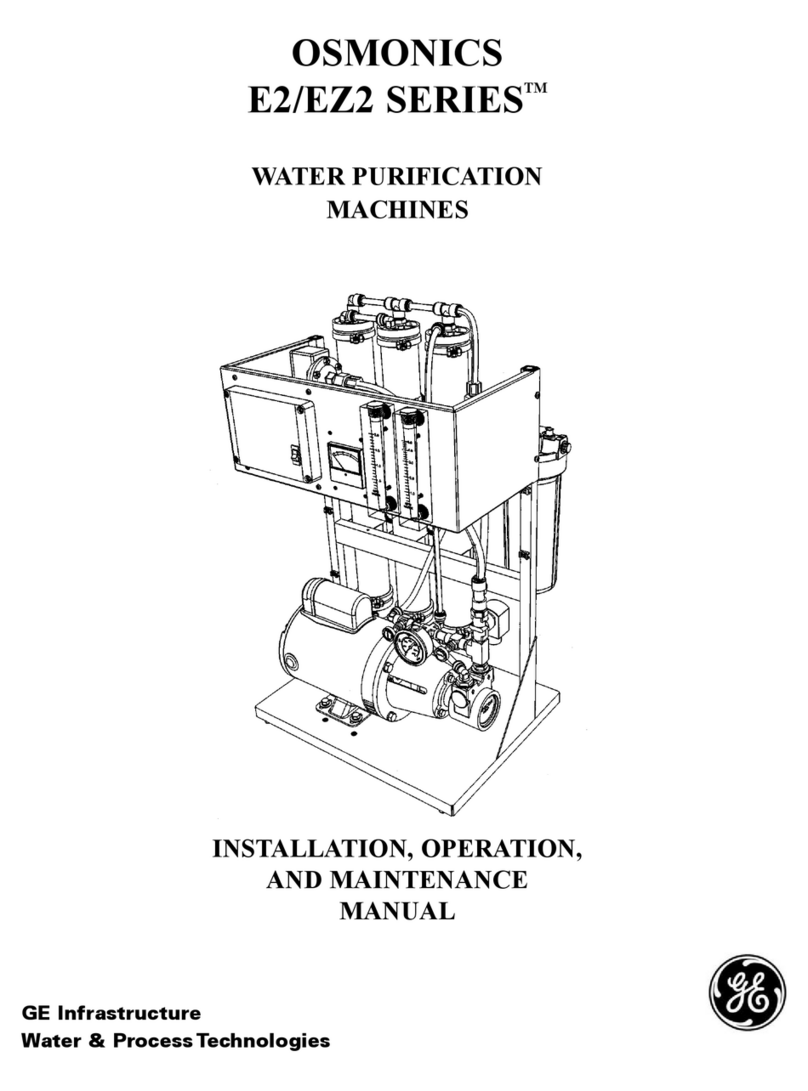
GE
GE E2 Series Installation and operation manual
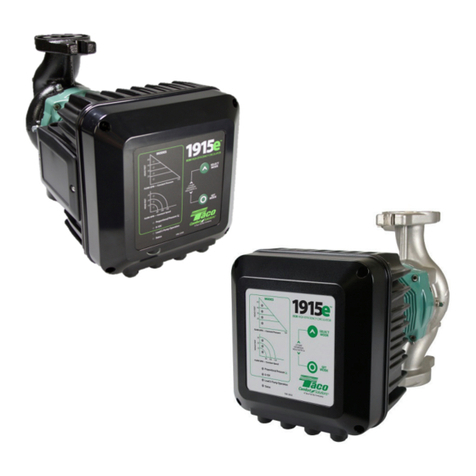
Taco
Taco 1900e Series instruction sheet

Atmos
Atmos EasySolar Series installation instructions
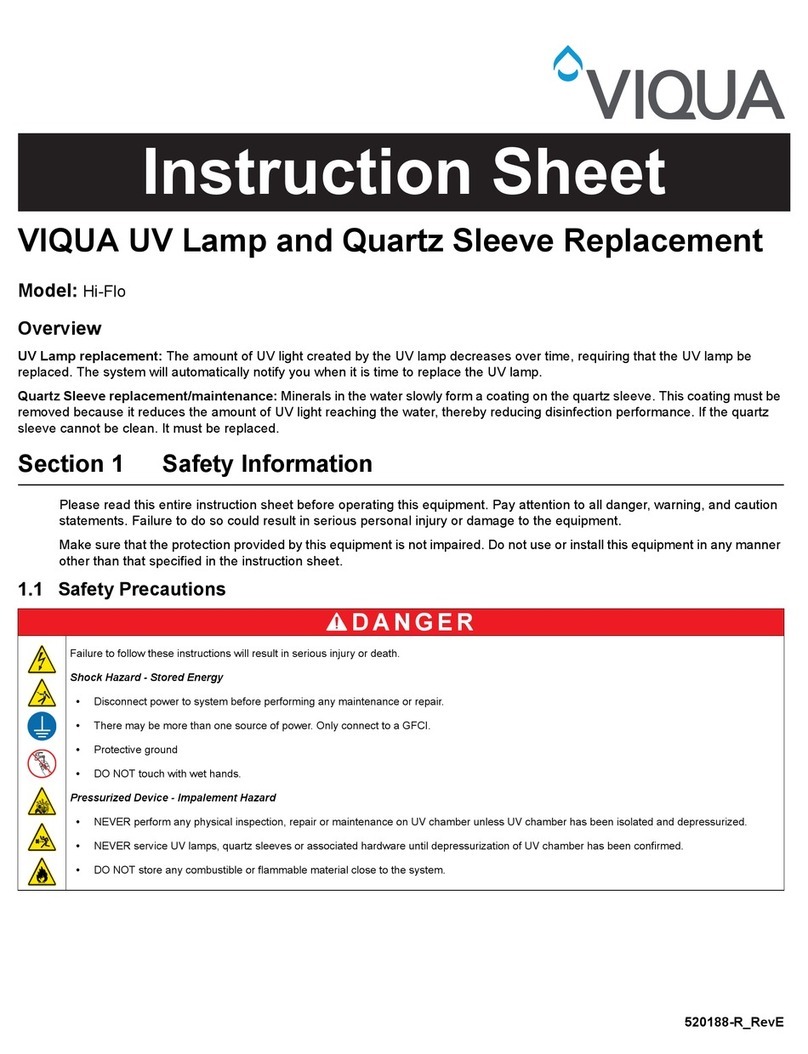
Viqua
Viqua Hi-Flo instruction sheet
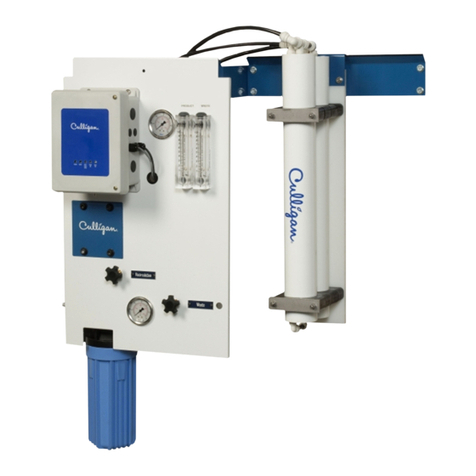
Culligan
Culligan M1 Series Installation, operation and service instructions

CRANE PUMPS & SYSTEMS
CRANE PUMPS & SYSTEMS Barnes PGPT Series user guide
